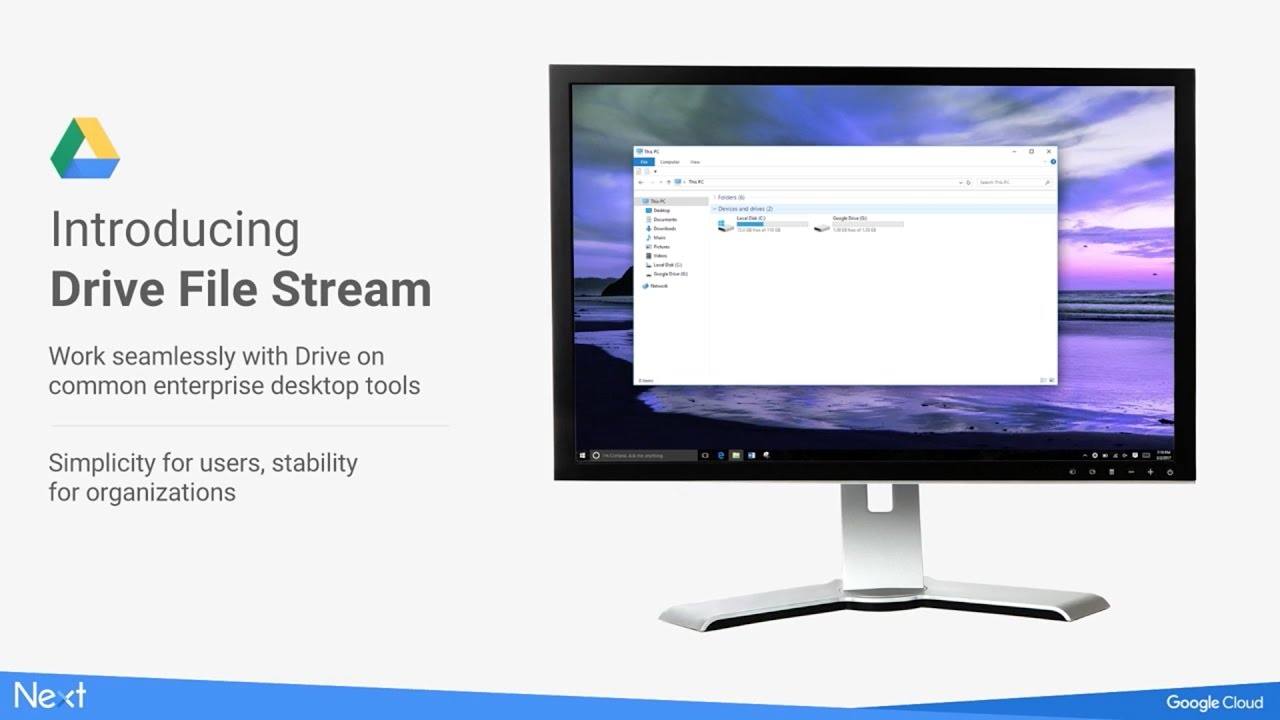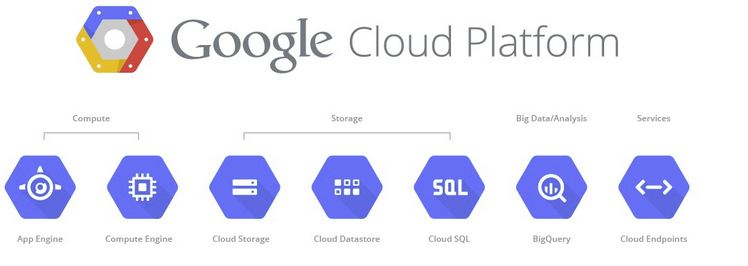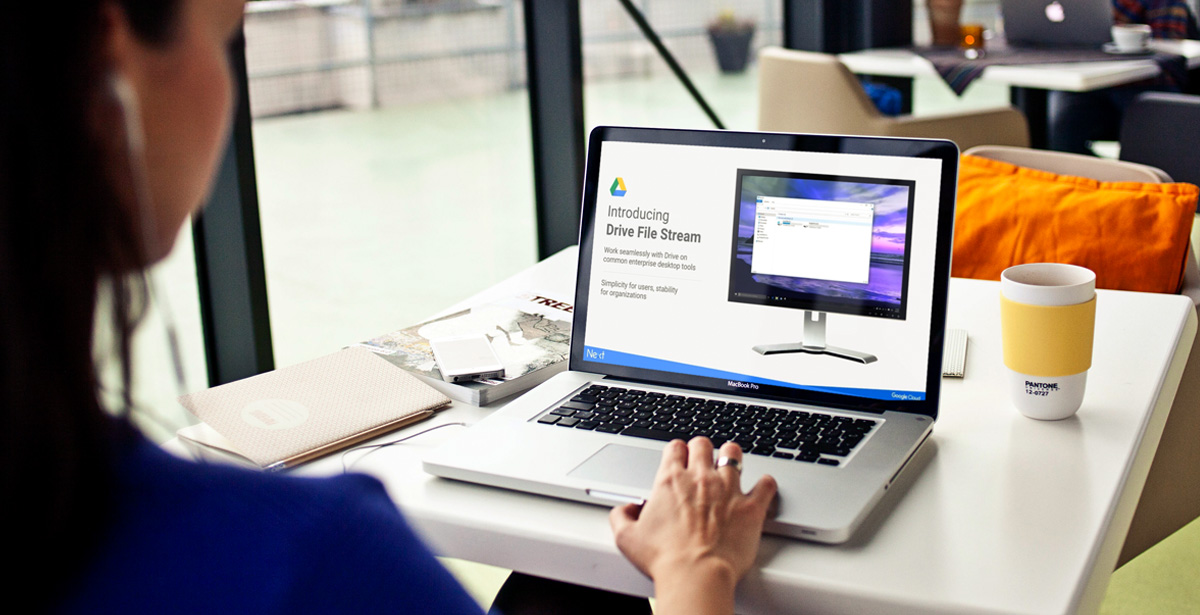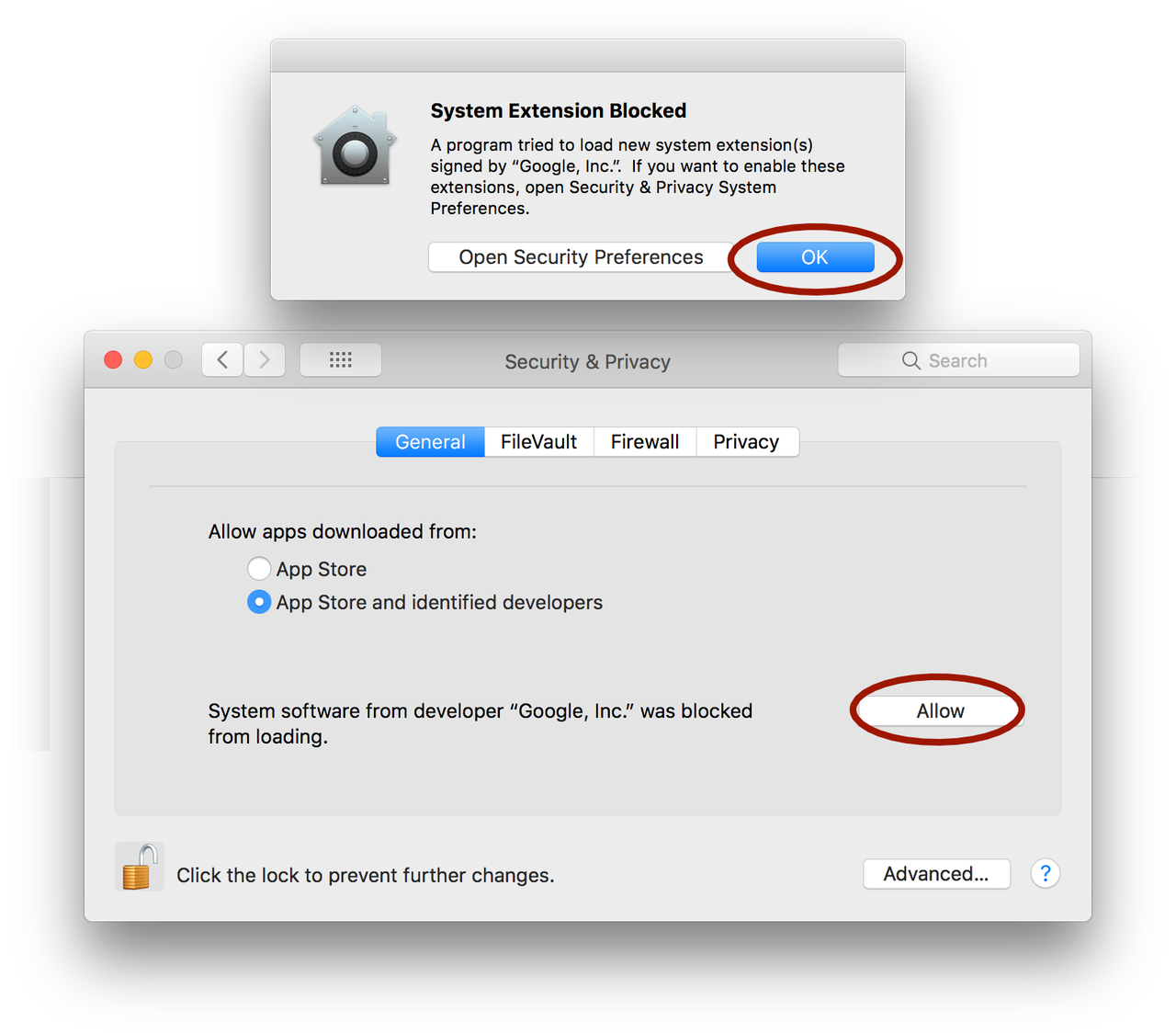With more than a billion users, Google Drive is the biggest cloud storage service on the planet. In fact, whenever you create a Google account, a Drive account is automatically created for you. Unlike Backup and Sync, you cannot back up local files to Drive by simply dragging and dropping the files to the shared drive. After all these extra features, ‘Backup and Sync' and ‘Drive File Stream' apps are obviously better than the Google Drive app which we can use in the browser anyways. At the bottom right (Windows) or top right (Mac), click Drive for desktop Open Google Drive. When you install Drive for desktop on your computer, it creates a drive in My Computer or a location in.
- Google File Stream Disappeared
- Google Cloud File Stream
- Google File Stream Msi
- Google File Stream Sign In
- Google Cloud File Stream App
- Google Cloud File Streams
- Google Cloud File Stream Login
Using cloud storage service for serving static files has become a common thing. The most popular option is using Amazon's S3 (Simple Storage Service). There are some alternatives to S3, one of them is Google Cloud Storage (GCS). This tutorial shows you how to getting started with GCS from the registration process until getting the key required to manage objects in your cloud storage space. Then, I'll give you examples how to upload file to Google Cloud Storage in Node.js, using @google-cloud/storage library.
1. Register and create project
Open Google Developer Console and create a new project
2. Enable Google Cloud Storage JSON API library
Google Cloud has a bunch of API libraries. In order to use a library, you must enable it first. Therefore you can control which libraries are enabled for a project. To find an API library, click Library on the sidebar.
Then use the search feature to find the library.
On the Google Cloud Storage JSON API page, click on enable
3. Create a new credential
Not everyone can upload to your bucket. A user must be authenticated. As for authentication, your app needs a credential. Click Credentials on the sidebar menu, then click Create credentials.
On the new page, you need to create new or select existing service account. Select the appropriate role and select JSON for key type
If success Private key saved to your computer.
4. Create a new bucket.
All uploaded files must be stored in a bucket. That's why you need to create at least one bucket. Open Google Cloud Storage Console. Then, click Create Bucket and type the name of the bucket you want to create.
After you have done all the steps above, now this is the coding time. Vehuiah sigil. For using the @google-cloud/storage library, first we need to call the constructor and pass the project ID along with the path to the .json authentication key in order to get authenticated by the service.
helpers/google-cloud-storage.js
In this tutorial, uploaded files will have public access. Files with public access can be accessed using the following URL format: https://storage.googleapis.com/${bucketName}/${fileName}. Therefore it's better to create a new helper function for generating public URL

helpers/google-cloud-storage.js
I divide this tutorial of how to upload file to Google Cloud Storage using Node.js into two cases:

- Upload a file from local path
- Directly upload file stream to GCS
In the first case, you already have the file you want to upload in your local directory. We need to copy that file into a bucket in GCS. Here is the example.
helpers/google-cloud-storage.js
The first parameter is the path where your file is stored on your local directory. The second parameter is options – you can get the list of available options here, just find the JSDoc of bucket.upload. Speedify free vpn. If the upload process is success, the function above returns the public link to the uploaded file.
The code above makes the uploaded file accessible by public because of the file.makePublic invocation. By default the file will be private. The options parameter which is an object supports predefinedAcl property with the following values:
- authenticatedRead: Object owner gets `OWNER` access, and `allAuthenticatedUsers` get `READER` access.
- bucketOwnerFullControl: Object owner gets `OWNER` access, and project team owners get `OWNER` access.
- bucketOwnerRead: Object owner gets `OWNER` access, and project team owners get `READER` access.
- private: Object owner gets `OWNER` access.
- projectPrivate: Object owner gets `OWNER` access, and project team members get access according to their roles.
- publicRead: Object owner gets `OWNER` access, and `allUsers` get `READER` access.
In addition, it also supports options.private and options.public, which is the shorthand of options.predefinedAcl = ‘private' and options.predefinedAcl = ‘publicRead' respectively. However using predefined ACL (including the shorthand) may cause the permission of the file cannot be changed using Google Cloud Storage bucket explorer. But at least you can still change it using file.makePublic or file.makePrivate later.
For the second case, for uploading file stream directly to Google Cloud Storage, we need to setup a new middleware for handling the uploading of the file.
middlewares/google-cloud-storage.js
The code above wil make the file publicly accessible as well because we make it public intentionally using file.makePublic.
We also need to create a new route for handling file upload to GCS. In this example, the route uses multer as the middleware for handling file upload. Then we need to call the sendUploadToGCS middleware we have created before.
routes/index.js
Google File Stream Disappeared
Once you've restarted your server, you can try to call the API. One of the easiest method is using HTTP client such as Postman, which provides a file selector. You should get the link to the uploaded file in the response if the file uploaded successfully.
Google Drive Never Stop Syncing
Google Drive, as one of the most popular onlinecloud storgae, owns countless users worldwide. Howerver, a lot of users complain about thatGoogle Drive app never stops syncing either stuck on 'Backing up 1 of XXX' or take days to onlybackup few items. Under such situations, some of them seek for solutions in online forums, someof them just leave as it is to hope it will finally finish itself, while some of them just wantto stop Google Drive sync at once.

I can't say which one is right and which is wrong because each one has his or her own choice totreat the problem. To leave it alone is also permitted but what if it seems will never completeeven after days of working? If so, I am afraid that you would better to cancel it even fortrying once again. Yet, sometimes, a direct solution is based on turning off the working processand doing some fixes.
Still, there are many other errors and unexpected problems which need to stop Google Drive fromuploading. Or, you just made a mistake and want to reset the settings. So there comes a problem:How to stop Google Drive from syncing? In the following parts, we will offer you 7 methods toresolve this problem.
How to Stop Google Drive Automatic Sync?
7 free and safe ways to disable Google Drive sync will be presented in the followingparts.
Solution 1. Stop Google Drive Upload When an Error Exists
If a problem occurs, it will usually give a related error message to explain why thiserror occurs and give some suggestions. At this moment, an option to cancel Google Drive syncshould be given. Then, you can just click this button to cease Google Drive service.
Solution 2. Quit Backup and Sync
Backup andSync is the very latest Google Drive app to replace former Desktop Uploader or Google PhotosBackup which can backup local items including photos/videos and other files to Google Drive.
If you want to stop Google Drive sync task, you can just close Backup and Sync app. Click on itsicon on taskbar/system tray on bottom right. Then, a window will pop up.
Click on the three dots on the top right of the pop-up window and then select 'Quit Backup andSync'.
Therefore, Backup and Sync will be closed and Google Drive sync will be stopped.
Solution 3. Pause to Suspend Google Drive Backup
Google Cloud File Stream
If you just want to halt Google Drive sync temporarily, you can choose to just pause itswork by clicking 'Pause' after clicking the three dots above. When you want to get it worksagain, you can just click 'Resume'.
Solution 4. Disconnect Account to Do Google Drive Disable Sync
Sign out of your account can also terminate current backup and sync service. Just pick'Preferences..' after clicking three dots above, then a window pops up. Choose 'Settings' tabon the left menu.

Click on 'DISCONNECT ACCOUNT' to log out your Google account to stop Google Drivesync.
Solution 5. Uncheck All Folders
Choosing no source folder makes Backup and Sync has no file to operate and this will actuallystop Google sync task.
Google File Stream Msi
Select 'Preferences' in above settings options. In 'My Computer' tab, and uncheck all localfolders. And, not choose all cloud items in Google Drive tab or just uncheck 'Sync My Drive tothis computer'. Finally, click 'OK'.
Solution 6. Uninstall Backup and Sync
No matter which type of computer you are using, desktop, laptop, notebook or ipad; no matterwhich kind of operating system Backup and Sync is running on, Windows systems or Mac OS, you canstop Google sync by uninstalling Backup and Sync.
Note: Even if you uninstall Backup and Sync, your files are still in drive.google.com.
Uninstall Backup and Sync through Windows Settings (Windows 10)
1. Click on Start (Windows 10 logo in the bottom left) and choose Settings (the gear icon abovePower icon).
2. Select Apps part.
3. Find Backup and Sync from Google in the right app list, click on it and click'Uninstall'.
Uninstall Backup and Sync through Control Panel (Windows 10)
1. Open Control Panel.
2. Choose Programs.
3. Click Programs and Features.
4. Click on Backup and Sync from Google and choose 'Uninstall'.
Uninstall Google Backup and Sync on Mac

helpers/google-cloud-storage.js
I divide this tutorial of how to upload file to Google Cloud Storage using Node.js into two cases:
- Upload a file from local path
- Directly upload file stream to GCS
In the first case, you already have the file you want to upload in your local directory. We need to copy that file into a bucket in GCS. Here is the example.
helpers/google-cloud-storage.js
The first parameter is the path where your file is stored on your local directory. The second parameter is options – you can get the list of available options here, just find the JSDoc of bucket.upload. Speedify free vpn. If the upload process is success, the function above returns the public link to the uploaded file.
The code above makes the uploaded file accessible by public because of the file.makePublic invocation. By default the file will be private. The options parameter which is an object supports predefinedAcl property with the following values:
- authenticatedRead: Object owner gets `OWNER` access, and `allAuthenticatedUsers` get `READER` access.
- bucketOwnerFullControl: Object owner gets `OWNER` access, and project team owners get `OWNER` access.
- bucketOwnerRead: Object owner gets `OWNER` access, and project team owners get `READER` access.
- private: Object owner gets `OWNER` access.
- projectPrivate: Object owner gets `OWNER` access, and project team members get access according to their roles.
- publicRead: Object owner gets `OWNER` access, and `allUsers` get `READER` access.
In addition, it also supports options.private and options.public, which is the shorthand of options.predefinedAcl = ‘private' and options.predefinedAcl = ‘publicRead' respectively. However using predefined ACL (including the shorthand) may cause the permission of the file cannot be changed using Google Cloud Storage bucket explorer. But at least you can still change it using file.makePublic or file.makePrivate later.
For the second case, for uploading file stream directly to Google Cloud Storage, we need to setup a new middleware for handling the uploading of the file.
middlewares/google-cloud-storage.js
The code above wil make the file publicly accessible as well because we make it public intentionally using file.makePublic.
We also need to create a new route for handling file upload to GCS. In this example, the route uses multer as the middleware for handling file upload. Then we need to call the sendUploadToGCS middleware we have created before.
routes/index.js
Google File Stream Disappeared
Once you've restarted your server, you can try to call the API. One of the easiest method is using HTTP client such as Postman, which provides a file selector. You should get the link to the uploaded file in the response if the file uploaded successfully.
Google Drive Never Stop Syncing
Google Drive, as one of the most popular onlinecloud storgae, owns countless users worldwide. Howerver, a lot of users complain about thatGoogle Drive app never stops syncing either stuck on 'Backing up 1 of XXX' or take days to onlybackup few items. Under such situations, some of them seek for solutions in online forums, someof them just leave as it is to hope it will finally finish itself, while some of them just wantto stop Google Drive sync at once.
I can't say which one is right and which is wrong because each one has his or her own choice totreat the problem. To leave it alone is also permitted but what if it seems will never completeeven after days of working? If so, I am afraid that you would better to cancel it even fortrying once again. Yet, sometimes, a direct solution is based on turning off the working processand doing some fixes.
Still, there are many other errors and unexpected problems which need to stop Google Drive fromuploading. Or, you just made a mistake and want to reset the settings. So there comes a problem:How to stop Google Drive from syncing? In the following parts, we will offer you 7 methods toresolve this problem.
How to Stop Google Drive Automatic Sync?
7 free and safe ways to disable Google Drive sync will be presented in the followingparts.
Solution 1. Stop Google Drive Upload When an Error Exists
If a problem occurs, it will usually give a related error message to explain why thiserror occurs and give some suggestions. At this moment, an option to cancel Google Drive syncshould be given. Then, you can just click this button to cease Google Drive service.
Solution 2. Quit Backup and Sync
Backup andSync is the very latest Google Drive app to replace former Desktop Uploader or Google PhotosBackup which can backup local items including photos/videos and other files to Google Drive.
If you want to stop Google Drive sync task, you can just close Backup and Sync app. Click on itsicon on taskbar/system tray on bottom right. Then, a window will pop up.
Click on the three dots on the top right of the pop-up window and then select 'Quit Backup andSync'.
Therefore, Backup and Sync will be closed and Google Drive sync will be stopped.
Solution 3. Pause to Suspend Google Drive Backup
Google Cloud File Stream
If you just want to halt Google Drive sync temporarily, you can choose to just pause itswork by clicking 'Pause' after clicking the three dots above. When you want to get it worksagain, you can just click 'Resume'.
Solution 4. Disconnect Account to Do Google Drive Disable Sync
Sign out of your account can also terminate current backup and sync service. Just pick'Preferences..' after clicking three dots above, then a window pops up. Choose 'Settings' tabon the left menu.
Click on 'DISCONNECT ACCOUNT' to log out your Google account to stop Google Drivesync.
Solution 5. Uncheck All Folders
Choosing no source folder makes Backup and Sync has no file to operate and this will actuallystop Google sync task.
Google File Stream Msi
Select 'Preferences' in above settings options. In 'My Computer' tab, and uncheck all localfolders. And, not choose all cloud items in Google Drive tab or just uncheck 'Sync My Drive tothis computer'. Finally, click 'OK'.
Solution 6. Uninstall Backup and Sync
No matter which type of computer you are using, desktop, laptop, notebook or ipad; no matterwhich kind of operating system Backup and Sync is running on, Windows systems or Mac OS, you canstop Google sync by uninstalling Backup and Sync.
Note: Even if you uninstall Backup and Sync, your files are still in drive.google.com.
Uninstall Backup and Sync through Windows Settings (Windows 10)
1. Click on Start (Windows 10 logo in the bottom left) and choose Settings (the gear icon abovePower icon).
2. Select Apps part.
3. Find Backup and Sync from Google in the right app list, click on it and click'Uninstall'.
Uninstall Backup and Sync through Control Panel (Windows 10)
1. Open Control Panel.
2. Choose Programs.
3. Click Programs and Features.
4. Click on Backup and Sync from Google and choose 'Uninstall'.
Uninstall Google Backup and Sync on Mac
1. Choose 'Applications' in Finder.
2. On the dock, drag B & S to Trash.
3. Move to upper left of computer screen, click 'Finder - Empty Trash'.
Google File Stream Sign In
Solution 7. Disable Google Drive Offline Sync
Go to https://drive.google.com/, click on 'Settings' (the gear icon on top right of the screen).In the pop-up window, in default General tab, move to Offline column, and uncheck 'SyncGoogle Docs, Sheets, Slides & Drawings files to this computer so that you can edit offline'option.
Google Drive Sync Alternative
If you have to stop Google Drive service due to some unsettled matters, you can rely on someother service provided by third party apps, such as MultCloud,to continue your task with Google Drive.
MultCloud is a web-based software which enables you to upload files from local devices to GoogleDrive and download files from cloud to local storage. It can be regarded as a platform whichgather and managecloud drives you added into it. Within this platform, you do operations like what youare doing in the cloud drive itself, like share, copy, rename, delete, upload, download, etc.
Google Cloud File Stream App
To make use of MultCloud to assist Google Drive, first of all, you should create an account of its service.Then, add Google Drive to its platform through 'Cloud Explorer - Add Cloud Drives - GoogleDrive'. It's recommended to perform the operations through Chrome, because there is an extensionto conntect Google Drive and MultCloud easily.
Google Cloud File Streams
After successfully adding Google Drive to MultCloud, you can manage it like the picture showsabove.
In addition to exchanging files between cloud and local, MultCloud also enables you to exchangefiles between different cloud drives or different accounts of same cloud by its 'Cloud Transfer'or 'Cloud Sync' feature. For example, you can transfer Google Drive to MEGAby using 'Cloud Transfer' feature.
Compare Google Drive App & MultCloud
Google Cloud File Stream Login
In the first place, you should make use of Google self-contained Backup and Sync app. In case GoogleDrive cannot sync and you have to stop Google Drive sync, you can seek help for MultCloud.Of course you can use MultCloud even when Backup and Sync working smoothly since MultCloud havemuch more functions and advantages that Backup and Sync does not have.
| Google Drive Backup and Sync | MultCloud | |
| Charge | Free | Free |
| Supported OS | Windows, Mac | Windows, Mac, Linux, Android, iOS |
| Supported device | Desktop, laptop, notebook | Desktop, laptop, notebook, phone |
| Supported cloud drive | Google Drive | Google Drive, Dropbox, OneDrive, MEGA, etc. about 30 clouds and more to be supported. |
| Sync between local and cloud | Yes | No |
| Sync between clouds | No | Yes |
| Schedule sync | No | Yes |

